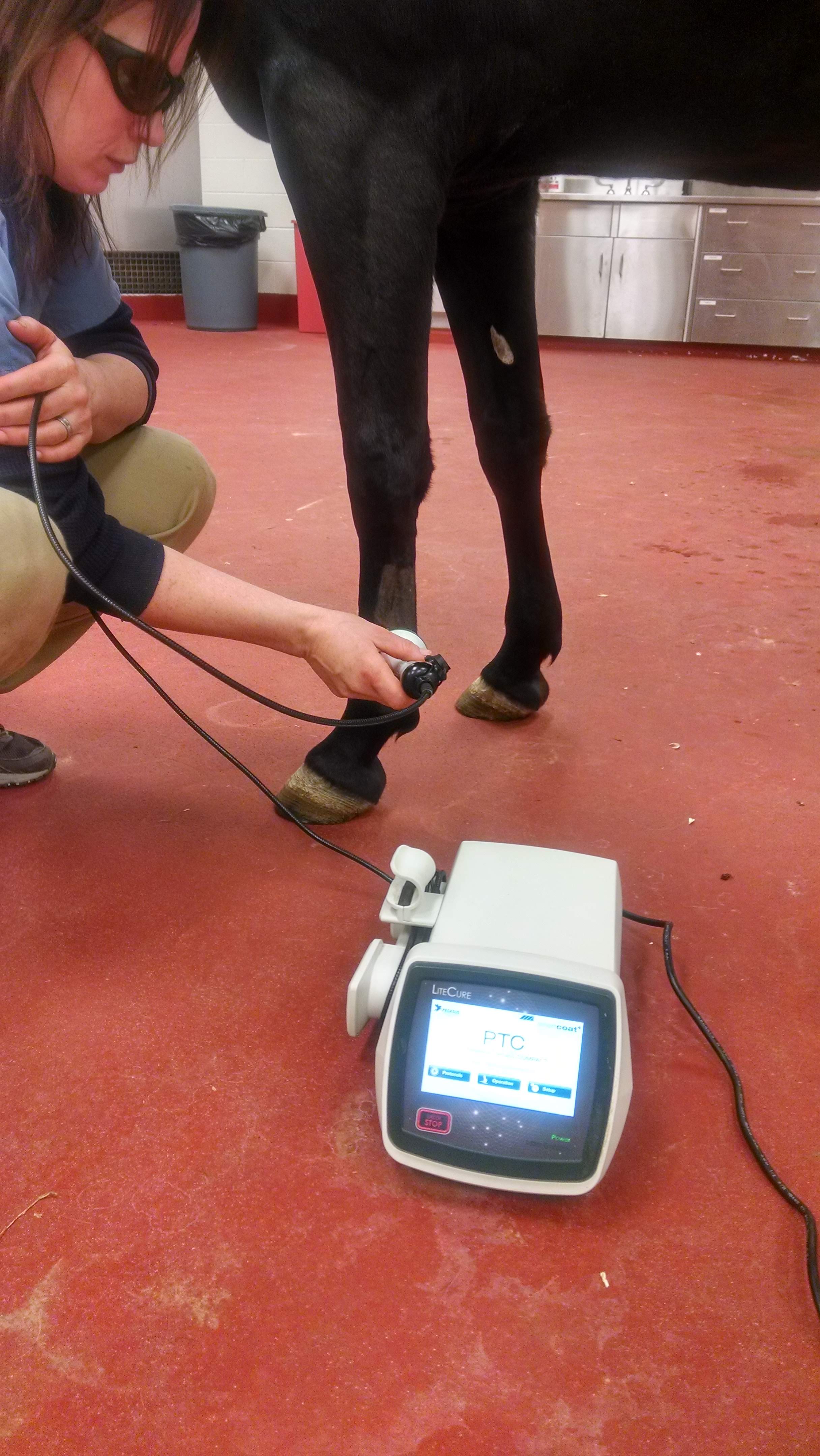Equine Therapy Success Stories: Genuine People, Actual Emotional Changes
Equine Therapy Success Stories: Genuine People, Actual Emotional Changes
Blog Article
Examining the Effectiveness of Laser Treatment in Equine Treatment for Injury Rehab
The analysis of laser therapy's performance in equine injury rehabilitation hinges on numerous aspects, consisting of healing time, pain mitigation, and tissue regeneration. Veterinarians often observe superior end results with laser therapy contrasted to traditional approaches, positioning it as a vital element in equine care. Equine Therapy.

Understanding Laser Treatment
Laser therapy has ended up being a critical tool in veterinary medication, particularly in the treatment of equine problems. Understood for its non-invasive nature and efficiency, laser treatment entails the application of specific wavelengths of light to promote tissue repair and minimize swelling. This healing technique is increasingly favored for its capacity to increase the recovery procedure in steeds suffering from a range of musculoskeletal injuries and chronic problems.
The primary system behind laser therapy is its capability to boost cellular features. Additionally, laser treatment promotes vasodilation, boosting blood circulation and oxygen distribution to broken cells, hence quickening healing.
In equine medicine, laser treatment is particularly helpful for conditions such as tendonitis, osteo arthritis, and injury recovery. The method is admired for its pain-relieving properties, permitting steeds to regain mobility and feature extra swiftly. Veterinarians additionally value its marginal negative effects compared to various other treatment methods, making it a trusted and safe alternative for equine treatment.
How Laser Treatment Works
To comprehend how laser therapy works, it is essential to dig into the interaction in between light power and organic tissues. Laser therapy, additionally referred to as Low-Level Laser Treatment (LLLT) or photobiomodulation, utilizes particular wavelengths of light to penetrate tissues and stimulate mobile procedures. The mechanism pivots on the absorption of photons by cell chromophores, primarily within the mitochondria, which are crucial for energy manufacturing.
Upon absorption, these photons set off a series of biochemical adjustments, improving mitochondrial function and leading to enhanced adenosine triphosphate (ATP) production. This rise in ATP increases mobile metabolic process, promoting tissue repair and regrowth. In addition, laser therapy modulates inflammatory actions by influencing cytokine levels and lowering oxidative stress, therefore reducing pain and swelling.
Another substantial aspect of laser treatment is its duty in enhancing microcirculation. The therapy promotes vasodilation, improving blood circulation and oxygen distribution to broken cells. This facilitates the elimination of cellular debris and supports the spreading of fibroblasts and collagen synthesis, essential for wound healing.
Professional Evidence
The efficiency of laser treatment in equine treatment has been corroborated through different medical studies, showcasing its healing prospective throughout a variety of conditions. A study performed by Turner et al. (2012) demonstrated that horses treated with low-level laser treatment (LLLT) for tendon injuries exhibited increased recovery compared to those obtaining traditional therapies.
In a similar way, study by Johnson and associates (2015) concentrated on equine muscle injuries, disclosing that laser treatment considerably sped up muscle fiber regeneration and reduced muscular tissue rigidity. Medical analyses have actually revealed that laser therapy can ease chronic problems such as osteoarthritis.
Vet Insights
Vet professionals have significantly acknowledged the value of laser therapy in equine therapy, mentioning both empirical evidence and direct experience. Dr. Jane Smith, a leading equine vet, keeps in mind that laser treatment has shown remarkable efficiency in minimizing swelling and accelerating tissue repair. "In my practice, I have actually observed faster healing times in equines treated with laser treatment compared to traditional techniques," she mentions. This sentiment is echoed by Dr. John Doe, who highlights that laser treatment uses a non-invasive alternative with minimal side results, making it particularly matched for equine patients.
Veterinarians likewise value the flexibility of laser therapy. She points out that laser therapy can be website here customized to the specific needs of each horse, making sure ideal outcomes.

Practical Considerations
A vital aspect of applying laser therapy in equine treatment involves recognizing the practical considerations that guarantee its effectiveness and security. It is critical to choose the appropriate laser gadget, as various types differ in wavelength, power, and infiltration deepness (Equine Therapy). Veterinarians should be well-versed in these criteria to customize therapy methods properly per injury type
Moreover, the frequency and duration of laser therapy sessions need cautious planning to make the most of restorative advantages while lessening any type of potential adverse results. Constant monitoring of the equine's reaction to therapy can assist required changes in the therapy program. Developing a secure and regulated atmosphere during therapies is also necessary to prevent unintentional exposure to laser discharges, which might harm both the horse and the trainer.
Educating and accreditation of employees administering laser treatment are vital to make sure correct strategy and to maintain security criteria. Furthermore, preserving accurate records of each session, including laser setups and observed results, is crucial for assessing the general performance of the therapy and for making data-driven choices.
Final Thought
Laser treatment has actually become an efficient technique in equine injury rehabilitation, using considerable advantages in healing time, discomfort relief, and cells healing. Professional studies emphasize significant enhancements in conditions such as tendonitis and osteoarthritis, connected to enhanced cellular function and increased ATP production. Veterinarian observations substantiate these searchings for, additional resources highlighting premium outcomes contrasted to typical therapies. For ideal outcomes, continuous tracking and customized treatment methods continue to be important in have a peek here leveraging the complete possibility of laser therapy in equine treatment.
Report this page